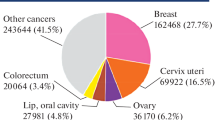Abstract
During the diagnosis of breast cancer, neoadjuvant chemotherapy is supplied intravenously. Physicians recommend chemotherapy before surgery to reduce the invasive tumor’s large size. This research work suggests a model for Neural Network Ensemble Machine Learning, Implementation of a series of machine learning algorithms to create an enhanced and efficient predictable solution patients ‘maximum pathological response after Neoadjuvant Chemotherapy. The quality of the neural network ensemble framework for machine learning is measured using multicriteria technique of decision making known as simple weighted additive (WSAW). The performance score for WSAW is calculated by taking into account ten measurements, namely accuracy, mean absolute error, root mean square error, TP rate, FP rate, accuracy, recall, F-measure, MCC, and ROC. The results are verified using the technique of cross-validation K-fold to achieve 97.20% accuracy. The findings are quite positive when the execution of the proposed system is coupled with the output of state-of-the-art classificators, for example, Bayes Net, Naïve Bayes, logistic, multilayer perceptron, SMO, voted perceptron, etc. With the increasing trend of artificial intelligence applications in cancer research, machine learning has a great future in forecasting and decision making.
Access this chapter
Tax calculation will be finalised at checkout
Purchases are for personal use only
Similar content being viewed by others
References
Asano Y et al (2017) Prediction of survival after neoadjuvant chemotherapy for breast cancer by evaluation of tumor infiltrating lymphocytes and residual cancer burden. BMC Cancer 17(1):88
Borchert et al (1997) Elevated levels of prostate-specific anti- gen in serum of women with fibroadenomas and breast cysts. J Natl Cancer Inst 89(8):587–588
Haffty B et al (2011) Meta-analysis confirms achieving pathological complete response after neoadjuvant chemotherapy predicts favourable prognosis for breast cancer patients. Eur J Cancer 47(14):2084–2090
Asri H et al (2016) Using machine learning algorithms for breast cancer risk prediction and diagnosis. Procedia Comput Sci 83:1064–1069
Tahmassebi A et al (2019) Impact of machine learning with multiparametric magnetic resonance imaging of the breast for early prediction of response to neoadjuvant chemotherapy and survival outcomes in breast cancer patients. Invest Radiol 54(2):110–117
Bibault JE et al (2016) Big data and machine learning in radiation oncology: state of the art and future prospects. Cancer Lett 382(1):110–117
Aslan MF et al (2018) Breast cancer diagnosis by different machine learning methods using blood analysis data. Int J Intell Syst Appl Eng 6(4):289–293
Huang CL et al (2008) Prediction model building and feature selection with support vector machines in breast cancer diagnosis. Expert Syst Appl 34(1):578–587
Yang P et al (2010) A review of ensemble methods in bioinformatics. Curr Bioinform 5(4):296–308
Kourou K et al (2015) Machine learning applications in cancer prognosis and prediction. Comput Struct Biotechnol J 13:8–17
Cain EH et al (2019) Multivariate machine learning models for prediction of pathologic response to neoadjuvant therapy in breast cancer using MRI features: a study using an independent validation set. Breast Cancer Res Treat 173(2):455–463
Bashiri A et al (2017) Improving the prediction of survival in cancer patients by using machine learning techniques: Experience of gene expression data: A narrative review. Iran J Publ Health 46(2):165
Wang H et al (2018) A support vector machine-based ensemble algorithm for breast cancer diagnosis. Eur J Oper Res 267(2):687–699
Pearl J (2000) Causality: Models, reasoning, and inference. Cambridge University Press. ISBN 0-521-77362-8. OCLC 42291253
McCallum A et al (1998, July) A comparison of event models for naive bayes text classification. In: AAAI-98 workshop on learning for text categorization, vol 752, No. 1, pp. 41–48)
Syarif A et al (2002) Study on multi-stage logistic chain network: a spanning tree based genetic algorithm approach. Comput Ind Eng 43(1–2):299–314
Orhan U et al (2011) EEG signals classification using the K-means clustering and a multilayer perceptron neural network model. Expert Syst Appl 38(10):13475–13481
Cortes C et al (1995) Support-vector networks. Mach Learn 20(3):273–297. https://doi.org/10.1007/BF00994018
Huang YM et al (2006) Evaluation of neural networks and data mining methods on a credit assessment task for class imbalance problem. Nonlinear Anal Real World Appl 7(4):720–747
Author information
Authors and Affiliations
Corresponding author
Editor information
Editors and Affiliations
Rights and permissions
Copyright information
© 2021 Springer Nature Singapore Pte Ltd.
About this paper
Cite this paper
Bhardwaj, R., Hooda, N. (2021). Neural Network Ensemble-Based Prediction System for Chemotherapy Pathological Response: A Case Study. In: Hura, G.S., Singh, A.K., Siong Hoe, L. (eds) Advances in Communication and Computational Technology. ICACCT 2019. Lecture Notes in Electrical Engineering, vol 668. Springer, Singapore. https://doi.org/10.1007/978-981-15-5341-7_30
Download citation
DOI: https://doi.org/10.1007/978-981-15-5341-7_30
Published:
Publisher Name: Springer, Singapore
Print ISBN: 978-981-15-5340-0
Online ISBN: 978-981-15-5341-7
eBook Packages: EngineeringEngineering (R0)




